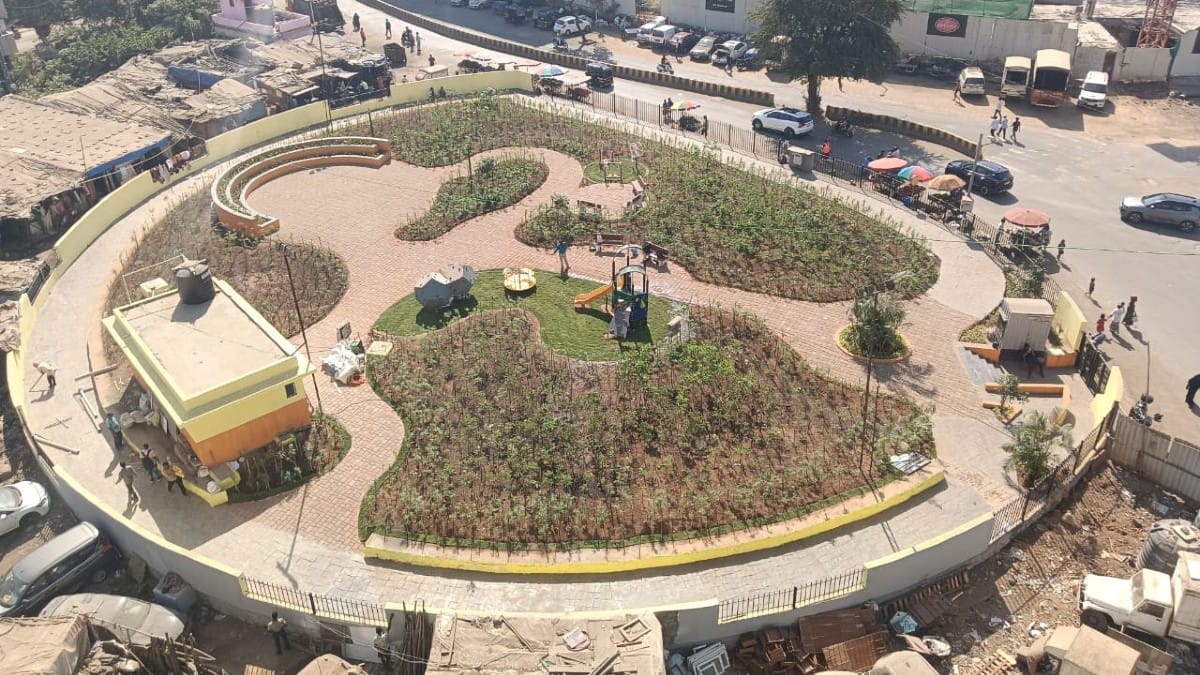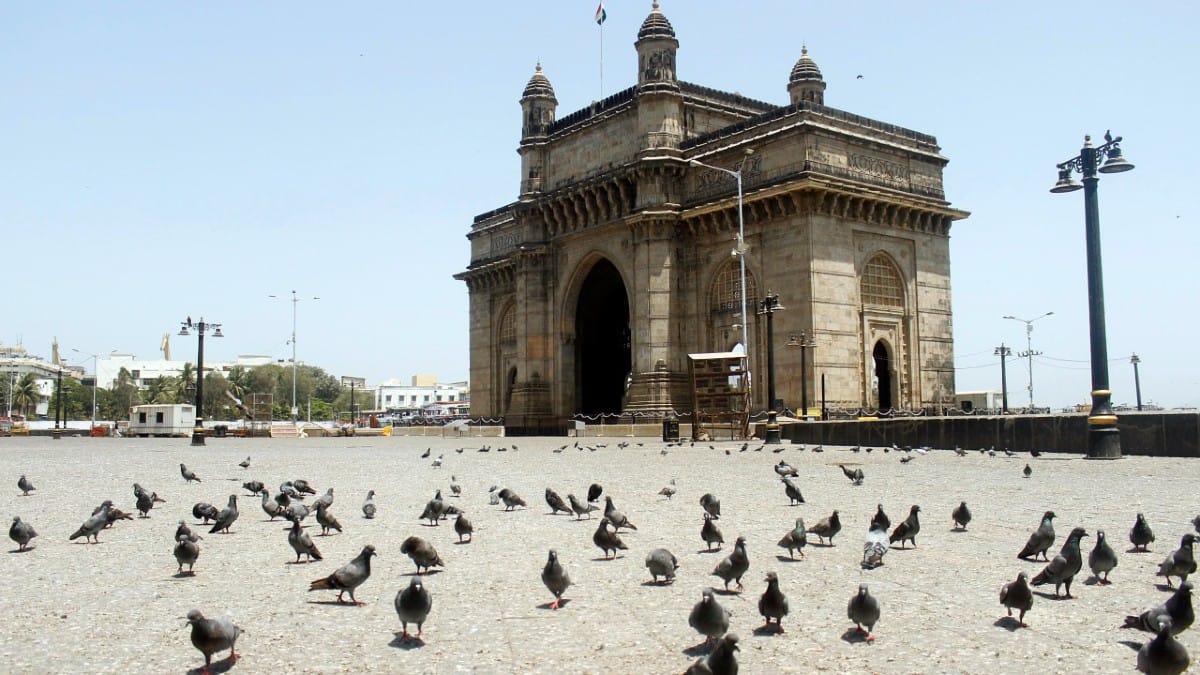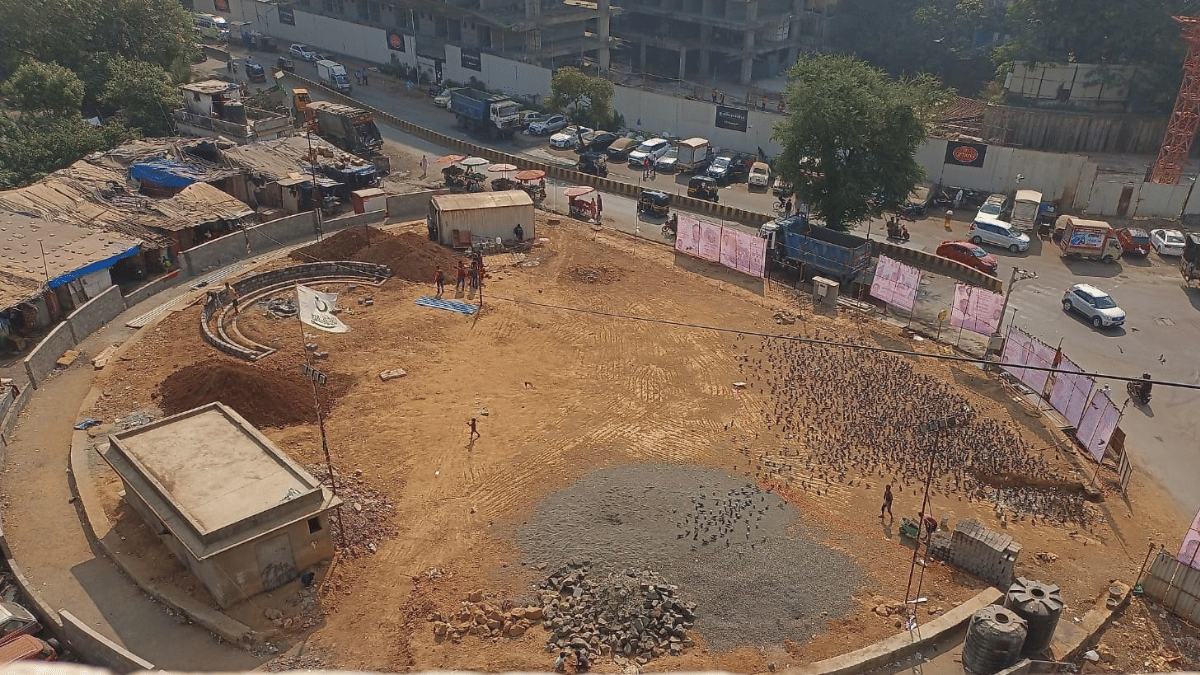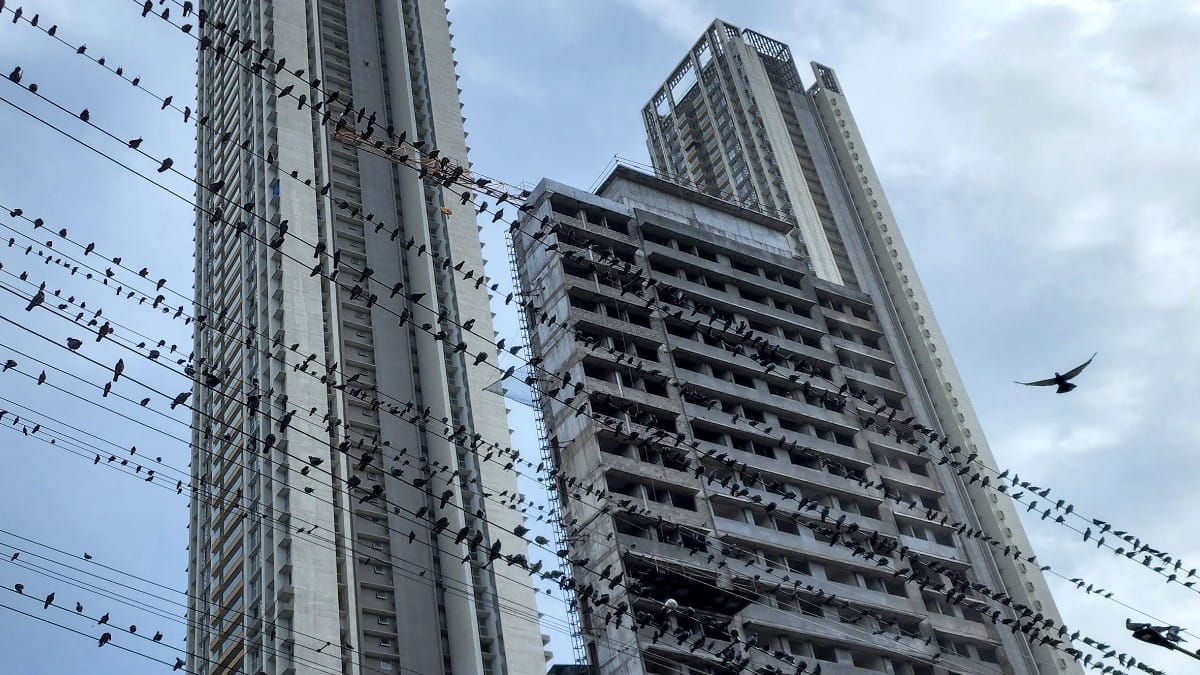Mumbai: At a traffic island in Dadar near the station, Manju Parmar, 68, scatters a handful of grain on the ground. Dozens of pigeons fly down and pick at the grain with their beaks. Parmar watches them with quiet contemplation, a regular ritual she shares with thousands of other Mumbai residents.
To her, feeding pigeons is a simple act of kindness. But for many others in Mumbai, the pigeons are a serious health hazard. The birds are seen perched on buildings, electric wires and pavements, and gathering by the hundreds at the city’s 51 kabutarkhanas, or designated feeding spaces for the birds.
“There is no issue with kabutarkhanas. If we need food all the time to survive, why would the pigeon not need food? And about health hazards, there are several other issues like cancer and cardiac arrest. So whatever is in our fate, we will get it,” said Parmar.
With many Mumbai residents raising concerns over the health hazards of having hundreds of pigeons at one location, the Maharashtra government has ordered the closure of the city’s landmark kabutarkhanas.
But it isn’t easy. Following the order, the Brihanmumbai Municipal Corporation (BMC) has started the process, but has been facing stiff resistance from people for whom feeding pigeons has been a daily ritual for years.
The BMC has been trying for a week now, imposing fines on people feeding pigeons, but has failed to deter either the feeders or the pigeons from vacating the premises.
“It is almost as challenging as removing hawkers. It’s a thriving ecosystem. You can’t do anything to pigeons. So, all we can do is run an awareness drive among people feeding them,” a senior BMC official told ThePrint.
Local residents at the Dadar kabutarkhana told ThePrint that after authorities removed a nearby grain stall, the seller simply shifted his shop to a nearby alley.

On 3 July, Shiv Sena MLC Manisha Kayande raised the issue of growing health hazards due to kabutarkhanas, especially at the traffic island in Dadar.
She cited studies linking pigeon droppings and feathers to lung infections and other respiratory ailments. And in response, minister Uday Samant said Mumbai had 51 kabutarkhanas and he would order the BMC to shut them down.
दादर पश्चिम वाहतूक पेठ येथील तसेच शहरातील इतरत्रही असणाऱ्या बेकायदेशीर कबूतरखान्यामुळे स्थानिक रहिवाशांना श्वसनाचे आजार होत असून अशा कबूतरखान्यांच्या बाबतीत शासनाचे काही धोरण आहे किंवा नागरिकांच्या आरोग्य विषयक समस्या लक्षात घेता अशा कबूतरखान्यांवर शासन काय कारवाई करणार याविषयी… pic.twitter.com/NZ47XSX5md
— Dr.Manisha Kayande (@KayandeDr) July 3, 2025
Animal rights activists Pallavi Sachin Patil and Sneha Visaria on Tuesday filed a writ petition in the Bombay High Court against the government’s directives and sought to restrain the BMC from demolishing these grounds. However, the HC refused to grant interim relief.
“The human health is paramount, we are not inclined to grant any ad-interim relief at this stage. Also, whatever medical material/evidence available concerning human health having a bearing on the policy of shutting down these places be placed on record by such affidavits to be filed by Municipal corporation,” the HC said in its order, a copy of which is with ThePrint.
The next hearing is scheduled 23 July.
Also Read: NCP tried crop rotation with Manikrao Kokate’s elevation. Agri minister now in farmers’ crosshairs
History of kabutarkhanas
Kabutarkhanas date back nearly three centuries when Mumbai, then Bombay, was getting formed as a city. They are simply enclosures with water baths and fountains developed to feed pigeons.
As the seven islands were being joined by reclamation to create a contiguous land parcel for a city, the East India Company offered incentives to attract traders, leading to an influx of Gujaratis—Hindus, Jains, Muslims, and Parsis.
“In Jains and Hindus coming from Gujarat, there is a concept called mercy feeding. They believe feeding pigeons can earn them goodwill. When the city expanded, wherever the Gujarati community went, the kabutarkhanas were replicated,” said city chronicler Bharat Gothoskar.
He also said that since the East India Company was consolidating its presence in the country and in Mumbai, it allowed the formalisation of the system as it did not want to interfere in local religious customs.

Mumbai has 51 designated pigeon feeding spots, and apart from that, it also has several unofficial feeding spots such as building terraces and parapets. Some informal ones have come up at the Gateway of India as well as the Banganga and Chowpatty areas.
“There is no doubt that pigeons are flying rats in terms of the diseases they carry. Even if kabutarkhanas are shut, the community will continue to feed them at newer spots because it is a concept deeply rooted. I think sensitisation is more important than a blanket ban. And to do so, the community heads should be taken into confidence to sensitise the public,” Gothoskar added.
Shutting down kabutarkhanas
This is not the first time these spots have come under the scanner. For the past decade and a half, multiple attempts have been made to shut down the kabutarkhanas.
However, the BMC faced resistance almost every time, apart from a few successes.
Vinayak Vispute, G-North Ward officer of the BMC, under whose jurisdiction Mumbai’s largest Dadar kabutarkhana falls, told ThePrint that he had been successful in shutting down two kabutarkhanas in 2021-22. One was in Khar and the other in Santacruz, where he was posted as a ward officer.
“Yes, it is challenging, no doubt. I had to face a lot of resistance from the people. They even went to court against me. But in the end, we won. The last time I was the ward officer in Khar and Santacruz, at those places, we captured the kabutarkhanas and converted them into beautification projects,” he said.
Vispute said some people argue that they should be allowed to feed pigeons once they have paid the fine. He said it was difficult to make them understand that the fine is a deterrent, not a permit to continue to feed.
The Khar kabutarkhana was a traffic island, which was then beautified, while the Santacruz one, which was a big circular space, was converted into a garden. Since feeding was stopped at those places, pigeons don’t come in large numbers.
The Dadar kabutarkhana is nearly 100 years old and has been declared a heritage site. Despite that, Vispute believes he will be able to make good use of it.
“We are not going to demolish the structure. Nor are we against birds or animals. I agree that it will take us more time, but our drive needs to go on. People won’t stop feeding the pigeons overnight. Expecting it might be shut in a week, a month, or a few months is overambitious,” he added.

Experts say that the rapid growth of the pigeon population in Mumbai in the last 10 years has become a public nuisance. They believe the more these pigeons are fed, the more their numbers will increase.
Health exports also point to the risk of pulmonary diseases from kabutarkhanas.
Pulmonologists have warned against growing lung and respiratory diseases because of pigeon feathers and droppings. They carry bacteria and viruses that cause health hazards, especially for those in the proximity of a kabutarkhana.
Dr. Lancelot Pinto, consultant pulmonologist and epidemiologist at Hinduja Hospital, welcomed the move to close down the kabutarkhanas.
“It is a welcome decision, and if you ask any pulmonologist in the city, they will tell you how we have been seeing a rise in cases of Hypersensitivity Pneumonitis (HP) amongst people in the last decade or so,” he told ThePrint. “In Mumbai, most people don’t have birds inside their houses, and so when we ask them if they have pigeon exposure, we very often get yes as an answer.”
HP, identified as early as 1965, was associated with people who had birds as pets.
According to a research paper by Hinduja Hospital, which is expected to be presented at the European Respiratory Annual Congress in Amsterdam this year, cases of Interstitial Lung Disease (ILD) have gone up among subjects in the city.
HP is the most common ILD, with 47 percent of people suffering from it. More than 50 percent of those tested with HP were near pigeons, the paper found.

Pinto said that it is not about culling the birds, but the natural order needs to be restored. “We are not asking for culling; just that let’s not encourage overpopulation by feeding them,” the doctor said.
Navkishor Pandey, who lives in Chembur and regularly travels to the Dadar kabutarkhana to feed pigeons, is, however, not ready to buy the health hazard argument.
“It is not the pigeons that are spreading diseases. It is the thousands of cars around the kabutarkhana that are more dangerous to health. Reduce the number of cars in the city first. The government is not willing to take action there because it has a monetary benefit,” he said.
BMC’s action
Meanwhile, BMC staff are randomly visiting the spots regularly. According to the 2006 civic cleanliness and sanitation bylaws of the BMC Act, the civic body has the right to fine Rs 500 for feeding birds or animals in public spaces.
Between 3 July and 13 July, since the time BMC started collecting fines, a total of 108 people have been fined, and the civic body has collected Rs 55,700 in fines.
At Dadar kabutarkhana, 16 people were fined, and bags of grain were seized. At some places, the BMC has put up boards barring people from feeding the pigeons, while at other places, its officials are sensitising bird feeders.
“In this current drive, we are demolishing certain structures wherever possible, and we are also seizing the bags of grains so that the feed is not available. We are also putting up boards at the locations,” said the senior BMC official quoted above.
Vispute said that his team is also talking to the trustees of temples around kabutarkhanas to involve them in building awareness.
“The activity will go on for some time, and in a few days of observation, if we come to know that people are not listening, then we can get police help, and action can be taken accordingly,” said the BMC officer.
With inputs from Abhishek Nimbhorkar, TPSJ alumni
(Edited by Sugita Katyal)
Also Read: Saffron fever, growing heft of Ranes & BJP’s plan to tackle Sena. Inside story of restive Konkan







The pigeons have been getting food here for almost a century.
Have you made any alternative arrangement ?
Let us close canteens in BMC offices and Mantralaya without giving any notice.